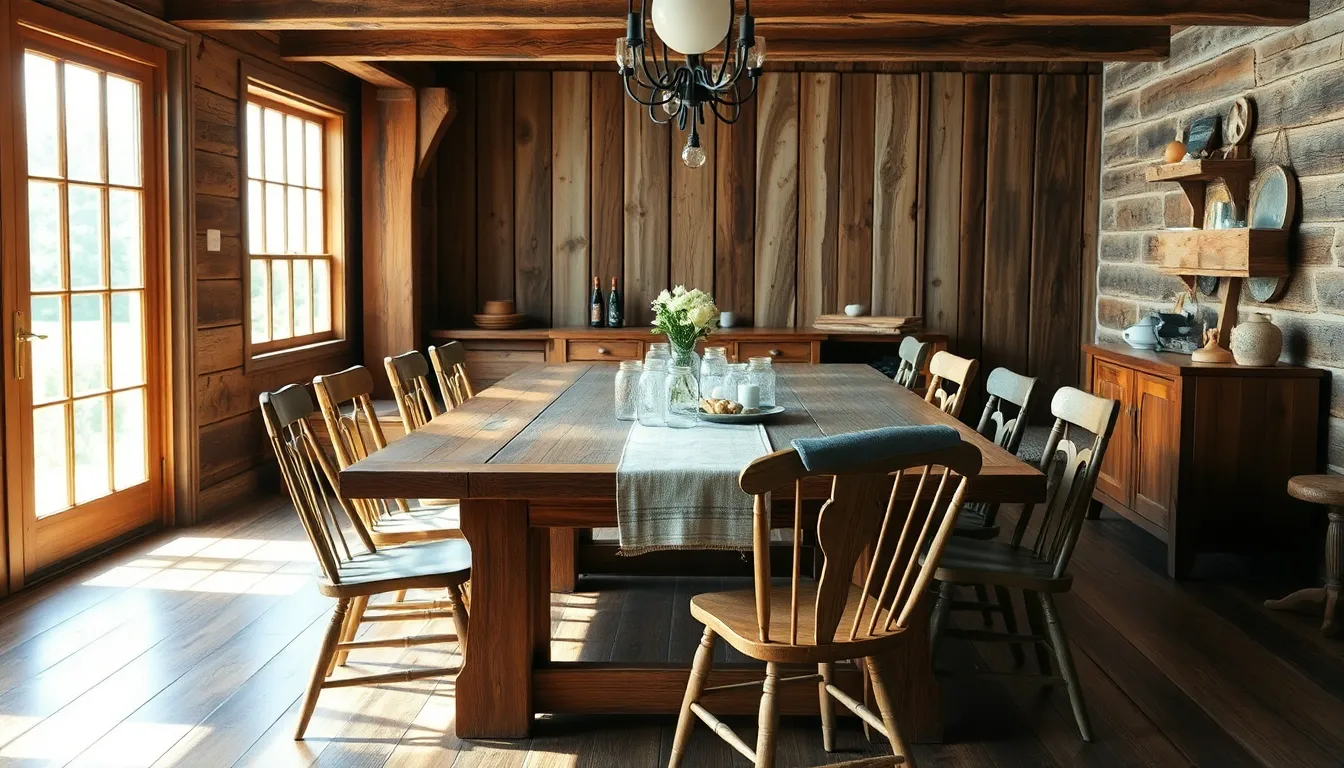Table of Contents
ToggleHome decor is more than just aesthetics; it’s a reflection of personal style and comfort. With the right elements, any space can transform into a sanctuary that resonates with warmth and creativity. From minimalist designs to vibrant bohemian vibes, the choices are endless, allowing individuals to express their unique tastes.
As trends evolve, so do the ways people approach their living spaces. Whether it’s through the use of color, texture, or innovative furniture arrangements, home decor offers endless possibilities for enhancing one’s environment. This article explores key trends, practical tips, and inspiring ideas to help anyone create a home that feels both inviting and stylish.
Importance Of Home Decor
Home decor plays a crucial role in shaping the atmosphere of a living space. It reflects personal style, enhances comfort, and creates an inviting environment. Thoughtfully selected decor elements create a cohesive look, combining colors, textures, and patterns that resonate with individual tastes.
Home decor impacts mood, influencing feelings of relaxation, happiness, or productivity. Research shows that well-decorated spaces can boost mental well-being, providing comfort and reducing stress. For instance, adding plants can improve air quality while instilling a sense of tranquility.
Additionally, home decor adapts to trends, allowing homeowners to incorporate modern elements without sacrificing originality. Current trends in sustainability and minimalism encourage choices that align with values. Using eco-friendly materials and focusing on clean lines can minimize visual clutter, promoting a calming atmosphere.
Home decor also enhances functionality. Furniture arrangements and lighting choices significantly affect the usability of a space. For example, multifunctional furniture maximizes available square footage in smaller homes, while strategic lighting creates depth and invites warmth.
Ultimately, home decor is essential for personal expression and practical living. It transforms houses into homes, reflecting the personalities of those who inhabit them and adapting to their evolving lifestyles.
Popular Home Decor Styles

Home decor styles vary significantly, each reflecting unique aesthetics and functionalities. Understanding these styles helps create spaces that enhance personal comfort and visual appeal.
Modern Home Decor
Modern home decor emphasizes simplicity and clean lines, focusing on functionality. This style incorporates neutral colors, minimal ornamentation, and open spaces that create a sense of airiness. Geometric shapes and innovative materials, like metal and glass, often feature in furniture and accessories. For instance, sleek sofas often come in monochromatic palettes, striking a balance between elegance and minimalism.
Bohemian Home Decor
Bohemian home decor embraces an eclectic mix of colors, textures, and patterns. This style often showcases vibrant hues, layered textiles, and a variety of decorative objects from different cultures. Natural elements, such as plants and woven materials, enhance the organic feel. For example, a bohemian space may include a mix of floor cushions, macramé wall hangings, and wooden furniture, all contributing to a relaxed and inviting atmosphere.
Rustic Home Decor
Rustic home decor highlights warmth and natural charm through raw materials and traditional craftsmanship. It often features wooden furniture, stone accents, and earthy color palettes that evoke a sense of coziness. Decor elements like reclaimed wood beams and vintage accessories enhance the charm of rustic spaces. For example, a rustic dining area may include a large farmhouse table surrounded by mismatched chairs, with decorative touches like mason jars and linen table runners for added warmth.
Tips For Decorating Your Home
Effective home decor combines aesthetics with functionality. Consider the following strategies to enhance your living space.
Color Schemes
Choosing the right color scheme influences the mood and atmosphere of a room. Neutral tones, such as whites and grays, create a calm backdrop. Bold colors, like deep blues and vibrant reds, add energy and personality. Pair complementary colors to achieve balance. Use color theory principles to select harmonious palettes that resonate with individual tastes.
Furniture Arrangement
Strategic furniture arrangement enhances flow and maximizes space usage. Create conversation areas by positioning sofas and chairs in clusters. Ensure pathways between furniture allow for easy movement. Utilize multifunctional furniture, like ottomans or coffee tables with storage, to add practicality. Arrange larger pieces against walls to open up the center of the room, creating an inviting environment.
Accessorizing Spaces
Accessorizing adds character and charm to any room. Use decorative pillows, throws, and rugs to introduce textures and colors. Incorporate artwork, including paintings and photographs, to personalize walls. Utilize plants for a touch of nature and enhanced air quality. Select versatile accessories that can be easily rotated to refresh the decor seasonally.
Sustainable Home Decor
Sustainable home decor focuses on environmentally friendly choices that reduce waste and promote responsible consumption. By incorporating eco-friendly elements, decor can enhance spaces while benefiting the planet.
Eco-Friendly Materials
Eco-friendly materials play a crucial role in sustainable home decor. These materials minimize environmental impact and promote health. Common materials include:
- Bamboo: Fast-growing and renewable, bamboo is a versatile material for furniture and flooring.
- Reclaimed Wood: Salvaged from old buildings or furniture, reclaimed wood adds character while reducing the demand for new lumber.
- Organic Fabrics: Materials like organic cotton or hemp use fewer chemicals and pesticides, making them safer for both the environment and indoor air quality.
- Recycled Glass: Products made from recycled glass, such as vases or countertops, reduce waste and create unique designs.
- Cork: Harvested from the bark of cork oak trees, cork is renewable and provides excellent insulation.
By choosing these materials, individuals can create beautiful, functional spaces that respect the environment and support sustainable practices.
Upcycling Ideas
Upcycling offers creative solutions for transforming old items into stylish decor. This process reduces waste and inspires innovation. Effective upcycling ideas include:
- Furniture Makeovers: Sanding down and repainting old chairs or tables creates fresh looks with minimal cost.
- Jar Planters: Glass jars can be repurposed as plant holders, adding greenery while reducing waste.
- Fabric Remnants: Using leftover fabric to create throw pillows or wall hangings enriches decor without additional fabric purchases.
- Old Doors: Repurposed doors can become unique headboards or coffee tables, adding character to any space.
- Wine Crates: By converting wine crates into bookshelves or storage solutions, individuals can utilize functional pieces with rustic charm.
These upcycling projects not only reduce environmental impact but also cultivate personal creativity in home decor.
Home decor is more than just aesthetics; it’s a powerful expression of individuality and comfort. By thoughtfully selecting decor elements and embracing various styles, one can create spaces that not only look beautiful but also feel inviting and personal.
Incorporating sustainable practices and modern trends can further enhance the living experience while being mindful of the environment. Whether opting for minimalist simplicity or vibrant bohemian flair, the right decor choices can transform any house into a true home.
With practical tips and creative ideas, anyone can curate a space that reflects their unique personality and lifestyle, making every corner a delightful sanctuary.




